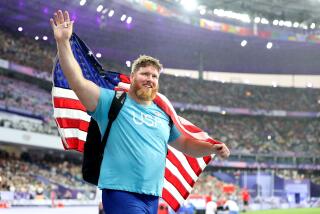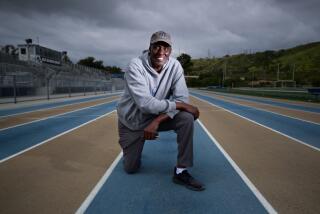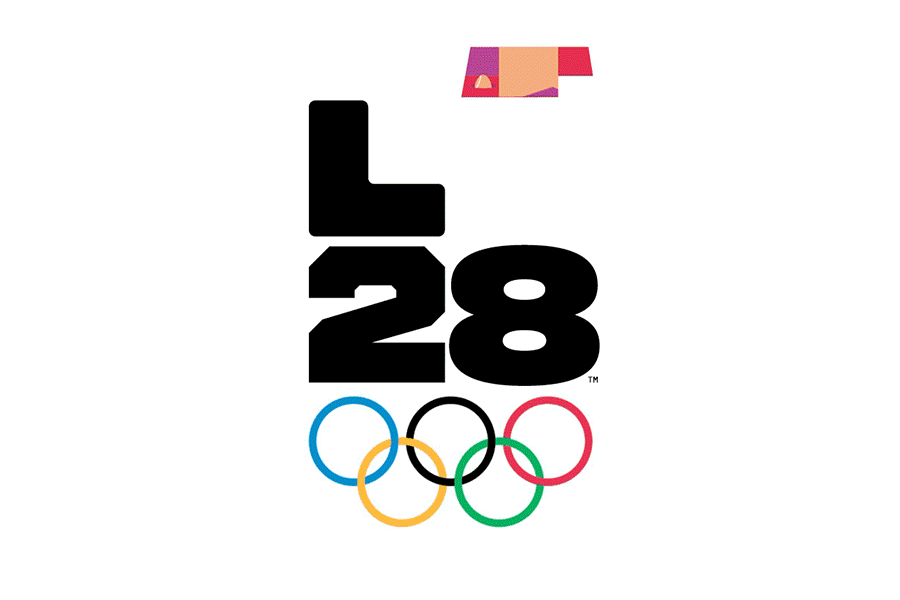London Olympics: Advances in swimwear for athletes — and you
- Share via
As swimmers go for the gold at the London Olympics, swimwear companies are ready to sell the latest Olympic-themed swimsuits back home.
Recreational and competitive swimmers alike can benefit from the same technologies swimsuit manufacturers are using to help the likes of Michael Phelps, Ryan Lochte, Natalie Coughlin (all sporting Speedos), and Matt Grevers, Nick Thoman, Ricky Berens, Ariana Kukors and Amanda Weir (all in Tyr).
The controversial suits of the 2008 Olympics, which prompted accusations of “technological doping,” are no longer allowed. Those suits led to record-breaking results but also resulted in new regulations on what is allowed in competitive swimwear from FINA, the international governing body of aquatic sports.
It was Speedo’s 2008 LZR Racer series — a full-length bodysuit developed in conjunction with NASA that featured polyurethane panels and layered textiles to trap air for buoyancy — and the development of high-tech suits by other major brands, including Arena, Jaked and BlueSeventy, that prompted FINA to issue rules banning polyurethane and rubber and requiring that swimsuits must be made from knit or woven materials.
FINA also placed limits on the thickness and buoyancy of suits, as well as on length, establishing that men’s suits may extend only from the navel to the knee (instead of the ankle), and that women’s suits must not cover the neck, extend past the shoulder or go below the knee.
But within the paramaters of the rules, cutting-edge suits are still being developed, said Jared Berger, Tyr Sport’s merchandise manager.
Tyr’s new AP12 Speedsuit series combines turbo compression — which provides the swimmer with a tighter core and better body positioning while reducing lactic-acid buildup in the muscles — with a new lightweight, hydrophobic micro-filament textile that repels water and decreases drag.
The racing suits are constructed with panels that match the swimmer’s body contours and they are bonded with high-frequency welding instead of sewn seams, to cut down on water resistance.
“The body is made of curves, not straight lines, and it fits your body like a second skin,” Berger said.
Compression and contouring are also important in Speedo’s new suits. Kate Wilton, Speedo USA’s director of performance, said that the right amount of compression in the core of the body makes it easier to swim.
Speedo’s new Fastskin3 Super Elite racing suit features zoned compression and a body stability web — a network of bonded seams that provides targeted support.
Another advance is the creation of a unified system in which the suit, cap and goggles all work together to improve water flow around the head and body, Wilton said.
Speedo’s research and development team used 3-D scanning to study the heads of hundreds of athletes, analyzing how water could flow faster over that part of the body, she said.
“With the goggles, you need to fill the whole eye socket and smooth out the front of the face,” she explained. “And with the cap, you need to make sure that the cap comes all the way down to the goggles for a seamless transition.”
The cap and goggles now have fit markers, which allow the athletes to feel if they’re aligned properly without using a mirror.
Both Tyr (which is pronounced “tier”) and Speedo have incorporated features of their racing series into swimwear for the nonprofessional swimmer.
“Tyr’s Olympic technology is available to aspiring swimmers of all ages,” said Kristen Gaidish, the company’s marketing manager. “When designing competitive, training and aquatic fitness swimwear, Tyr puts the same emphasis on fabric sourcing, fit and durability that we do on our technical suits.”
Tyr’s USA 2012 Collection swimsuits use a nylon-Lycra compression fabric, similar to that of the AP12 series, to increase speed and reduce drag. The material is engineered for maximum sun resistance and resists chlorine 5 to 10 times longer than traditional Spandex swimwear, Gaidish said. It is also used in Tyr’s fitness suits for extra control and support.
The USA 2012 collection consists of Olympic-inspired swimwear, apparel and accessories, including suits, warm-up jackets, T-shirts, hoodies, men’s board shorts, backpacks, swim caps and goggles, all in American-themed prints and designs. They are available for fans to purchase online or in sporting good stores, along with the technical suits. The apparel ranges from $24 to $60, and regular suits range from $68 to $72. Those in the professional racing series go for $240 to $339.99.
Tyr’s Tracer B racing series is also available for purchase. The suit was first launched in 2008 and is the technical suit for the brand’s sponsored Olympians who are opting not to wear the AP12. Prices range from $83.99 to $320.
For recreational swimmers, Speedo’s offerings include the Power Sprint, which uses Speedo’s core control compression fabric at the waist for a slimming effect.
“In reality, there’s only a million swimmers in the U.S. that consider themselves competitive swimmers, so we asked ourselves how do we take components of that and make it more viable to the average consumer,” Wilton said.
The company also integrated Olympic technology into its competitive swimwear offerings.
“It’s important to account for the 1,500-plus bodies that participated at Olympic trials, as well as the thousands of athletes that train for a meet not quite as elite as Olympic trials,” Wilton said. “The elite athlete has such a specific body type, but when you go down, there’s a broader range of body types.... We want to make sure we are making a suit that appeals to the general competitive swimming population as well as the Olympians.”
The brand also developed a Team Speedo collection consisting of suits, warm-up jackets, pants, T-shirts, accessories, bags and footwear inspired by Speedo’s Olympic swimmers, who will wear parts of the collection during the Olympics.
Team Speedo apparel ranges from $20 to $125. The swimwear goes from $52 to $82, and the professional suits from $260 to $595. The products are sold online or at sporting goods stores.
More to Read
Go beyond the scoreboard
Get the latest on L.A.'s teams in the daily Sports Report newsletter.
You may occasionally receive promotional content from the Los Angeles Times.






